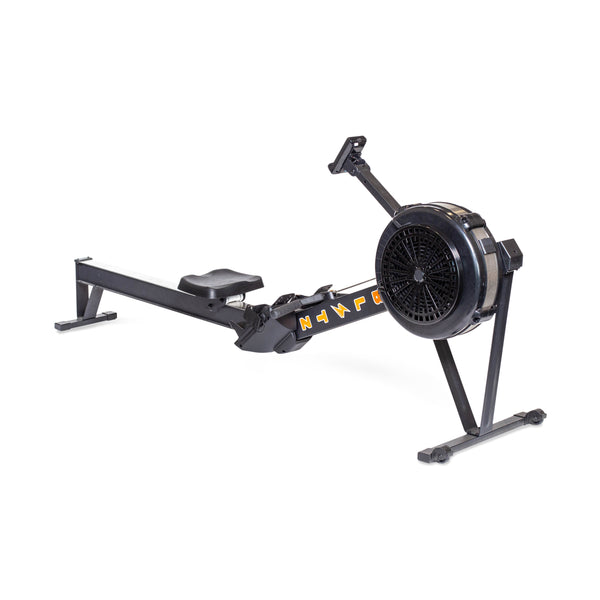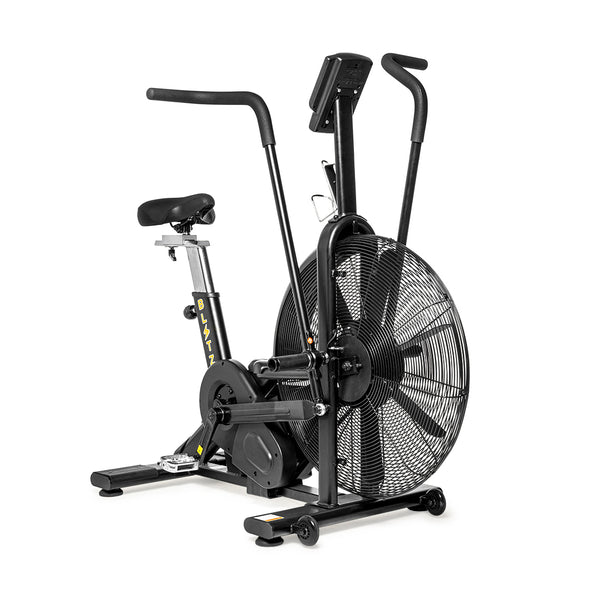Whether you wear your workout-induced leg soreness like a badge of honor or you loathe the feeling of your limbs feeling heavy and slow, one thing's for certain: getting your legs refreshed and recharged as quickly as possible means less downtime before your next leg workout.
When it comes to optimal workout frequency, delayed onset muscle soreness (DOMS) can sometimes stand in the way far longer than it should. If you're keen on knowing how to reduce muscle soreness after leg day, this article is for you. You'll learn the basics of what DOMS is, why it occurs, and — most importantly — how to drastically decrease its presence, notably with a straightforward and scientifically backed protocol.
What is Delayed Onset Muscle Soreness (DOMS)?
DOMS is a type of discomfort and stiffness that arises in muscles following strenuous physical activity or exercise. Unlike the immediate discomfort that arises during a challenging workout, symptoms of DOMS typically don't peak until 24 -72 hours after the activity. Typically, the intensity of DOMS that one experiences is proportional to:
- The intensity of the workout or exercise.
- The amount or volume of physical activity performed at high intensity.
- How unaccustomed an individual is to the exercise(s) performed or to physical activity in general.
Naturally, the more mechanical stress your leg muscles undergo (i.e., the harder they work during squats, lunges, sled pushes, etc.), the higher the DOMS discomfort you'll likely experience over the following days. If your body isn't familiar with any particular exercises you perform or has a low baseline of physical fitness, you'll be sure to experience a hefty amount of DOMS. As such, a recipe for massive amounts of DOMS goes something like this: Excessive DOMS = heavy resistance + high volume of exercise + brand new exercises
The good news is that we can do plenty to manipulate this equation to reduce the presence of DOMS.
Here’s how:
Managing Your Training Loads and Overall Volume
The first step, which doesn't sound exciting, is appropriately managing your training loads and volumes. This means performing leg exercises with weights (training loads) that stimulate rather than annihilate your muscles. The second step involves performing an ideal training volume within each lifting session. Volume simply refers to the sum of your sets, repetitions, and weight lifted (volume = sets x reps x weight lifted).
The goal of your training should be to stimulate your muscles to trigger adaptations in strength and size, which doesn't require you to perform dozens of sets from a half-dozen or more exercises within a training session. This concept looks different for each lifter depending on their conditioning, training goals, needs, and abilities. Nonetheless, it's worth knowing that striking the minimal effective training dose (performing the minimal amount of work required to elicit the training stimulus and adaptations you're after) will cut out any unnecessary DOMS you may be experiencing after leg day.
Minimal effective training dose, or MET, isn't something I've made up here — it's a scientific concept employed by top strength coaches, lifters, and athletes serious about optimizing their training to the greatest extent possible. But what about the DOMS that will still result even after dialing in the perfect training regimen? Read the following section to learn what you can do immediately after finishing your leg workout and how it can reduce DOMS by upwards of 60%!

Incorporating Active Recovery
Post-workout recovery, which can facilitate the reduction of DOMS, can occur through two different means:
- Passive recovery interventions
- Active recovery interventions
Let’s dive deeper into the similarities and differences between these two forms of recovery.
What is Passive Recovery?
Passive recovery intervention involves receiving therapeutic input to your muscles from external sources (massage therapy, compression garments, etc.). Essentially, this intervention lets your body sit still as it receives input from external sources (i.e., your muscles aren't moving while being acted upon), letting your body naturally recover independently is also considered passive recovery.
While passive recovery certainly has its time and place, active recovery interventions are the gold standard for reducing DOMS after leg day. There are scientifically proven protocols for these interventions (more on that in a moment), and they don’t require any specialized therapeutic equipment.
What is Active Recovery?
Unlike its passive counterpart, active recovery intervention is the process of creating a recovery cascade (a series of physiologically favorable reactions) within the muscles by moving your muscles in ways that prevent them from sitting still. Think of this as an internal stimulus for your muscles instead of an external stimulus.
If you're interested in shutting the door on DOMS, active recovery is the first step you need to implement. Active recovery is typically what most people consider "cool down" exercises, such as walking, leisurely cycling on a stationary bike, and stretching following their workout. While generalized "cool down" activities are certainly a good idea, if you're serious about reducing DOMS after leg day, you'll want to read the following section that goes over how to clear 60% more lactate from your muscles than when compared to passive recovery alone.
Lactic Acid Flush Protocol
Ultimately, DOMS results from numerous physiologic disruptions (cellular and metabolic changes) that have taken place within the muscles due to a challenging workout. Thankfully, this isn't science class, and the details aren't important… But, a basic conceptual understanding is important. An easy way to think of it is like a car engine: the engine (your muscles) uses fuel sources to operate but generates exhaust (a bunch of "junk") in the process. With exercised muscles, one of the components of this "exhaust" is a metabolic byproduct known as lactate or lactic acid.
Without going into the scientific weeds, here's the basic premise to be aware of: the more of this substance you leave to sit in your muscles after a workout, the more soreness and stiffness you'll likely experience over the coming days.
Naturally, the more of it you can clear from your muscles as quickly as possible, the less soreness you'll have. And this is where performing a lactic acid flush comes into play. In a study by Martin et al. (1998), performing the following lactic acid flush protocol on a stationary bike at 40% VO2 max following intense leg exercise yielded 60% greater lactate removal than when compared to passive recovery inventions (sitting still) or sports massage.
How to Perform a Lactic Acid Flush on a Stationary Bike:
- Hop on a stationary bike a few minutes after completing your last working set in your training session.
- Begin pedaling at 80 RPM and dial in the resistance level on the bike so that your heart rate is around 60% of its maximal rate when pedaling.*
- Hold this pace at this resistance level for 20 minutes.
*To calculate this percentage, find your theoretical maximal heart rate by subtracting 220 from your age (ex. 220 - 37 years = 183 beats per minute). Then, multiply this number by 0.6 (ex. 183 x 0.6 = 110). Spending 20 minutes on a bike to clear 60% greater amounts of exercise-induced lactate following a lower-body workout is a small price to pay for experiencing notably reduced soreness and stiffness over the following days. Besides, some light conditioning work does the physique good, too!
If you're not planning on using a heart rate monitor here and aren't quite sure what 60% maximal heart rate intensity feels like, simply aim for an intensity of 6/10 on the bike; this intensity should feel mildly taxing but by no means something that should by no means feel exhausting or overly strenuous. Anecdotally, I always feel a notable difference in how much DOMS I experience in my legs over the following days if I perform this protocol immediately after a leg workout.
Additionally, so long as the parameters stay the same, this protocol doesn't necessarily have to be performed on a stationary bike. However, a stationary bike makes the most sense since we're talking about flushing the leg muscles following a lower-body workout.
How to Perform a Lactic Acid Flush on Other Cardio Equipment:

If you only have access to a rower, an air bike, a treadmill, or other piece of conditioning equipment other than a stationary bike, here’s what I would do: Work at a pace that lets you keep moving for 20 minutes. If you're using an air bike or rowing machine, you should likely go slower than 60% of your maximum heart rate. This slower pace ensures your leg muscles contract and relax properly for the best possible lactate removal. If you have a treadmill, walking briskly or with a slight incline (or both, if available) would work well. Getting your heart rate in the optimal 60% zone and sustaining this movement for 20 minutes should be easy.
How to Perform a Lactic Acid Flush with No Cardio Equipment:
A brisk walk outdoors will likely benefit you if you don’t have access to conditioning equipment.
Regardless of the exercise mode used, the key is to perform continual, low to mid-grade movement intensity for your legs. Make your movement challenging enough to feel like your heart rate is mildly elevated but not so elevated that you can’t move at a brisk pace for the entire 20-minute duration.
The worst thing you could do is to sit still after a leg workout, which will only facilitate the collection of DOMS-inducing lactate to stay put within your leg muscles.
Final Thoughts
Experiencing DOMS in your legs after leg day doesn't have to be a miserable experience. By performing active recovery interventions, you can significantly reduce how stiff and sore your leg muscles become over the following days—getting you back into the gym and under the weights much quicker. So, now that you know how to reduce DOMS after leg day, go get after it!
Disclaimer: None of this is medical advice and is for informational purposes only; please seek an assessment from a qualified healthcare professional.
This is a guest post by Jim Wittstrom. Jim is a physiotherapist and strength & conditioning specialist currently practicing in Calgary, Alberta, Canada. His passion is to help others overcome their physical pain and come back stronger than before. For more great info, you can find him on Strength Resurgence.
References: 1. Martin NA, Zoeller RF, Robertson RJ, Lephart SM. The comparative effects of sports massage, active recovery, and rest in promoting blood lactate clearance after supramaximal leg exercise. J Athl Train. 1998;33(1):30.



